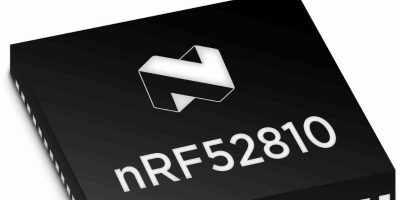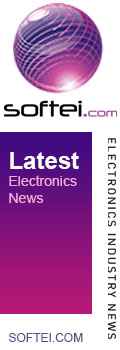Nordic Semiconductor’s nRF52810 is “most accessible” Bluetooth 5 SoC
According to Nordic Semiconductor, the nRF52810 meets the widest range of applications to date, including wearable and PC peripheral applications
The system on chip (SoC) extends Nordic’s nRF52 series of Bluetooth low energy SoCs and opens up the end-user benefits of Bluetooth 5 to even the most cost-sensitive, high-volume products and applications.
The peripheral and memory-optimised nRF52810 brings the key performance benefits of Bluetooth 5 to the most cost-sensitive, high-volume applications. Features include twice the data bandwidth (2Mbps) compared with the Bluetooth low energy implementation of Bluetooth 4.2; and eight times the broadcasting ability with advertising extensions that increase the advertising packet payload size to 251bytes for more efficient data transfer, particularly in beacon applications.
Example target applications include network-connected sensors and beacon building blocks for the internet of things (IoT), low-cost wearables, low-cost wireless mice and keyboards for computers and tablets, toys, disposable medical monitoring devices, and basic radio frequency (RF) remote controls.
The nRF52810 SoC is a sub-set device of Nordic Semiconductor’s nRF52 series (including the nRF52832 SoC with which the nRF52810 is pin-compatible, and the nRF52840 SoC). The nRF52810 SoC uses the same 100dBm link budget 2.4GHz multi-protocol radio as the nRF52832 SoC, and has a 64MHz, 32-bit ARM Cortex M4 microcontroller (MCU), providing similar RF performance and computational power with reduced radio energy consumption of 4.6mA respectively for Tx at 0dBm, and Rx at 1Mbit/s. Though nRF52810 is a baseline Bluetooth 5 SoC, a selection of popular peripherals is available. The nRF52810 SoC integrates 196kbyte flash and 24kbyte random access memory (RAM); the nRF52832 SoC has 512kbyte flash and 64kbyte RAM. The nRF52810 has ample memory to run application code typical of high-volume, low cost applications. Over-the-air device firmware updates (OTA-DFUs) of target applications are also supported.
Geir Langeland, Nordic Semiconductor’s director of sales and marketing explains that early Bluetooth designs were too expensive to be justified for lower-level applications. “Nordic has addressed that challenge with the nRF52810 SoC; this low-cost variant not only rounds out our nRF52 Series offerings but it also opens up a whole new world of possibilities for simple, cost-constrained Bluetooth low energy applications,” he says.
“If the vision of an IoT comprising many billions of interconnected sensors is to be realized,” he continues, “those sensors will not only require decent range, throughput, and security but they will also need to be inexpensive to purchase, install, and maintain. The nRF52810 SoC brings that realisation a little closer.”
The nRF52810 SoC is compatible with the nRF52 development kit (DK) and application code compiled for the device is portable to all SoCs in the nRF52 series. Application development is supported by the S132 SoftDevice, supporting up to 20 concurrent links in any combination of roles, and the nRF5 SDK.
The nRF52810 SoC is sampling now to selected customers. The SoC comes in either a 6.0 x 6.0mm, 48-pin QFN package with 32 general purpose input/outputs (GPIOs), or a 5.0 x 5.0mm, 32-pin QFN with 16 GPIOs. In addition to the ARM Cortex M4 MCU, 2.4GHz multiprotocol radio with 96dBm sensitivity (at 1Mbit/s), and memory capacity, the SoC has analogue to digital converter (ADC) and analogue comparator, one PDM digital mic input, one four-channel PWM, one SPI, one I2C, one UART, one QDEC and +4dBm (max) output power.
http://www.nodicsemi.com
WEARTECHDESIGN.COM – Latest News/Advice on Technology for Wearable Devices
Weartechdesign is unlike any other website currently serving the technology
for wearable devices. We carry the very latest news for design engineers and purchasers.
Register on our mailing list to receive regular updates and offers from
WearTechDesign




